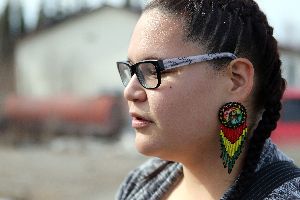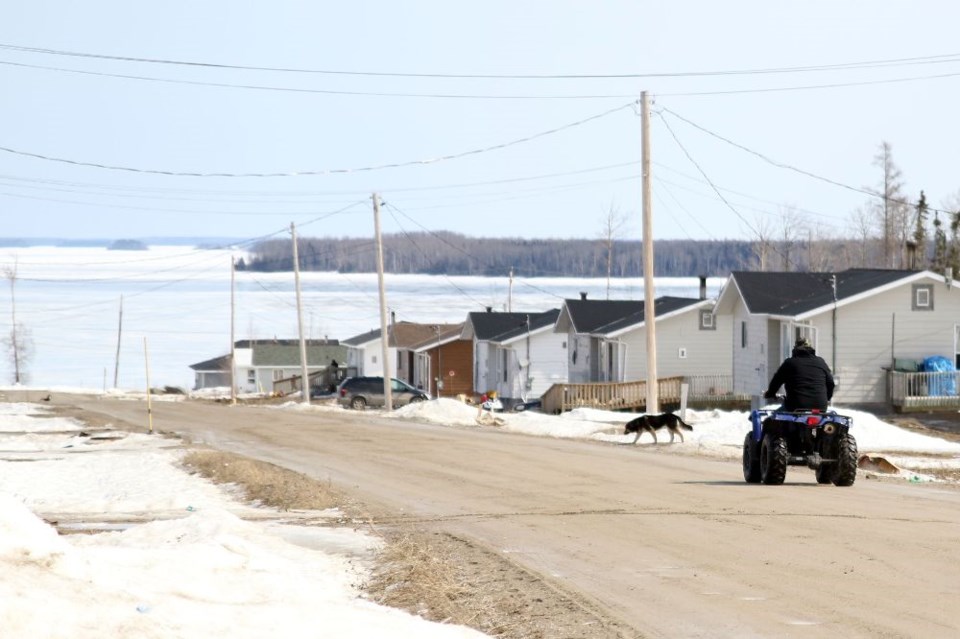NESKANTAGA -- Charla Moonias didn’t want to leave home but she knew she couldn’t stay.
Another Neskantaga First Nation youth had taken their own life and Moonias saw herself headed down the same road.
She had followed her education through to Grade 8, the highest diploma locally available. Poor health whirled around her from sickness due to Canada’s longest-standing boil-water advisory of 21 years, houses were overcrowded and moldy and she was watching untreated mental health problems rot the social health of her community.
Moonias was distracted in training as she scratched at the bandaids covering the blisters and rashes Neskantaga’s poor quality water had left on her skin. To leave would be to abandon her home, her family and friends, the land, her culture and her community.
But to stay was leading her thoughts to the unthinkable.
“Everything is connected – the water, the housing, mental health is the big one,” she said.
Without even telling her father, Moonias bought a plane ticket to Sioux Lookout and flew away from the only life she’d ever known. She was 15 years old.
It took four months of counseling before she was able to go back to school but being so far from home and family at a young age made her unable to focus on her education. She dropped out in both Thunder Bay and Sault Ste. Marie.
Living with families who couldn’t foster her cultural development during her formative years, Moonias dulled the pain with drugs and alcohol.
She finally found her footing at Queen Elizabeth District High School in Sioux Lookout and she’s slated to graduate this year.
 Moonias was back home in Neskantaga on Friday, chosen to speak to Minister of Indigenous and Northern Affairs Carolyn Bennett on behalf of the community’s young people. She used her time to illustrate the end point of colonization and displacement in underserviced remote communities.
Moonias was back home in Neskantaga on Friday, chosen to speak to Minister of Indigenous and Northern Affairs Carolyn Bennett on behalf of the community’s young people. She used her time to illustrate the end point of colonization and displacement in underserviced remote communities.
“When I’m out there, I miss my home. When I miss my home, I turn to alcohol and that’s the big problem with us youth. When something is missing in our life, we drink. It’s a big problem,” she said.
“When I come here, I know I can stay sober. When you’re here, depression comes along and that’s what makes you want to go out there but when you’re out there, you don’t know how to deal with that depression so you end up drinking.”
“When you drink, it doesn’t solve anything. That’s when the suicidal thoughts come.”
Moonias left in the midst of a state of emergency Neskantaga declared in 2013 when seven young people committed suicide. Chief Wayne Moonias hasn't lifted it to this day, expressing frustration over the federal government’s continuous calls for it to end when he sees no motion to address its root causes.
For Charla Moonias, all issues flow back to the water. Neskantaga’s youth are now grown men and women who have never known clean water to drink or bathe in and their clothes have always been washed in water from the high-nutrient source. Those health issues are compounded with overcrowding in houses whose wood-walled basements are folding against the clay.
Her job at Sioux Lookout's Tim Hortons couldn't support her for the cost of food alone in Neskantaga, where four tomatoes sell for $7, three bags of milk cost $15 and balogna is worth $12.
Without education or health supports, young people like her are leaving Neskantaga, only to find themselves stuck between alienation in settler society and the quality of life in their community on the land.
What is being presented as youth mental health crisis, she said eloquently, is both oversimplifying and overcomplicating the matter.
“Everything is just out of place. We need everything to just click. Once we solve one problem, it will help us solve the next problem and so on and so on. We have to start somewhere. I’m hoping we can start with the water treatment plant.”
